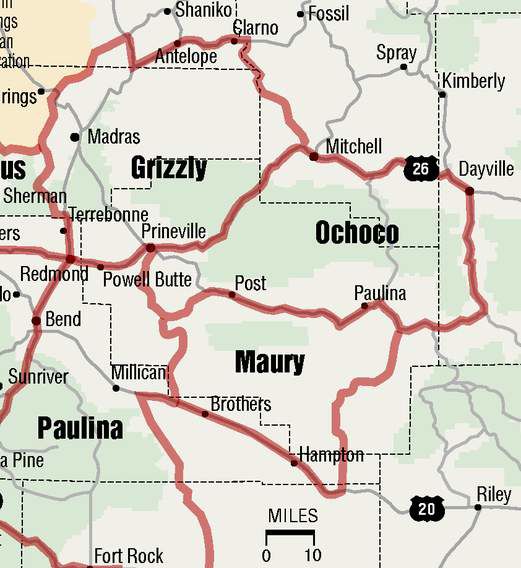Bowhunting in Central Oregon
Published 5:00 am Thursday, August 25, 2011

- Bowhunting in Central Oregon
More Central Oregon bowhunters plan to stay close to home this season, opting for a chance at a High Desert buck in a down economy.
Hunters who typically would combine deer and elk hunting in northeast Oregon are expected to remain in Central Oregon to hunt mostly for deer this archery season, according to Steve George, a Bend-based wildlife biologist for the Oregon Department of Fish and Wildlife.
“Central Oregon is by far one of the better deer areas (in the state), but not great for elk,” George said this week. “People go to the Blue Mountains (in northeast Oregon) for deer AND elk. Because of the economy, (Central Oregon hunters) are opting for fewer elk and staying closer to home for deer.”
The 2011 general bowhunting season begins this Saturday in Oregon and runs through Sept. 25.
Bob Kinyon, president of the Bend Bowmen Archery Club, was gathering his gear this week to prepare for a weeklong bow hunt for deer and elk in the Desolation Unit in northeast Oregon.
Still, Kinyon said he sees more of his bowhunting buddies remaining in Central Oregon.
“Just because of the economy and fuel prices,” Kinyon said. “You’ll see a lot more locals here, and other places also. It’s not just Bend. But we see trucks where I hunt from Idaho and New Jersey. People will spend the money to go to nice hunting areas.”
Kinyon added that more and more hunters are ending their summers in the field with an archery tag. Bowhunting, while considered more challenging than rifle hunting, is more widely available to hunters. Most wildlife management units in the state are general season for archery hunters, meaning they are not limited to a certain number of hunters who must apply in advance for a tag.
“It’s the warm weather, the challenge and the availability of the tags,” Kinyon said of bowhunting’s allure. “You can buy a tag and go hunt.”
Two units that are controlled for deer and elk bowhunting are right here in Central Oregon: the Ochoco and Maury units in the Ochoco National Forest near Prineville. Deer bowhunters in the Ochoco Unit must also have a controlled Ochoco Unit elk bow tag, according to the 2011 Oregon Big Game Regulations. Elk bowhunters in the Maury Unit must also have a controlled Maury Unit deer bow tag.
Elsewhere in Central Oregon, the bowhunting is general season.
The deer population in the Deschutes District — which includes the Upper Deschutes, Metolius and Paulina units — is in pretty good condition, according to George.
“There’s a pretty good distribution of deer scattered about,” George said. “Water is in the forest in the deer range. The water (rains) from our nice wet spring has held.”
George said the Metolius Unit has the most dense population of deer and the highest buck-to-doe ratios among units in the Deschutes District.
“There should be a fair number of deer in the Upper Deschutes (unit), and quite a few in the Metolius,” George said. “Paulina is the worst out of the three.”
George added that the majority of deer in the area are younger animals with forked horns. He also noted, though, that “a fairly good supply of bigger three-point or four-point bucks are available.”
The elk population in the Deschutes District is quite low, George said.
While bowhunting is more difficult than rifle hunting, archers do have some advantages, such as warmer weather and a longer season.
While rifle seasons are generally two weeks or less, bowhunters have four weeks to bag their prey. But the archers must get much closer to the animal to execute a proper kill shot to the heart.
Most archers these days use compound-class bows, which often include sights to line up the target and a trigger to release the arrow. Some bows even come equipped with magnifying scopes. Hunters with compound bows need to be within 40 yards of their prey for a proper kill shot, according to Kinyon.
“Every year the technology advances so much,” Kinyon said. “It helps the people who haven’t practiced a lot or who are just picking up the sport to become accurate archers in a short amount of time.”
Traditional bows are simpler, with a single string, but they require more strength when pulling the arrow back to shoot. Traditional archers must be within 20 to 25 yards from an animal for a good kill shot, Kinyon noted.
Both types of bowhunters will take to the field this weekend across Oregon.
“Everybody’s been waiting all year to get out there,” Kinyon said. “You have to wait 11 months to get back in the woods.”






